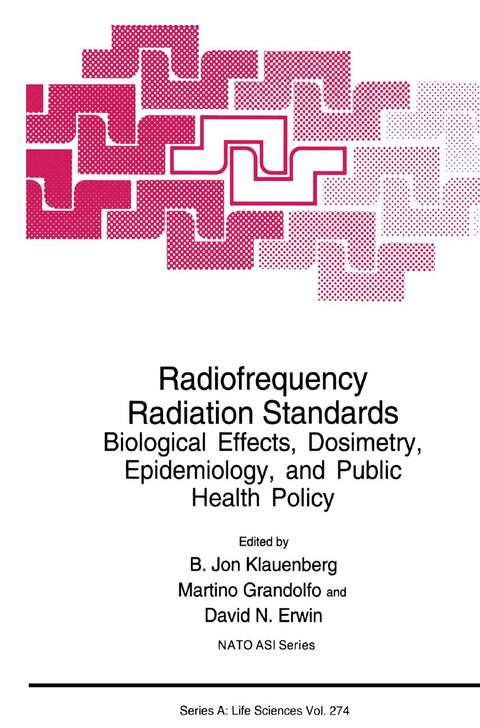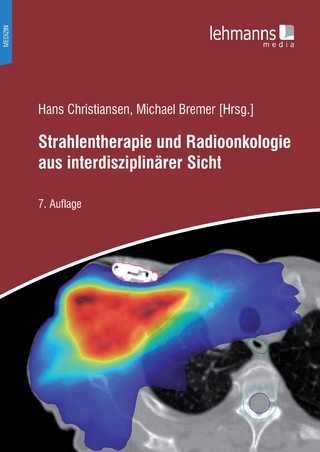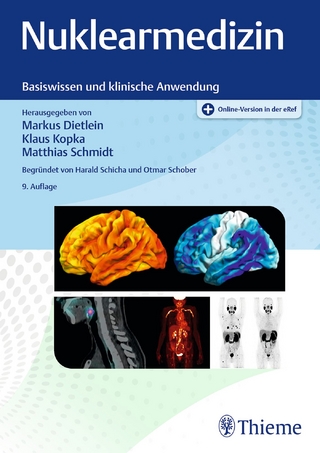
Radiofrequency Radiation Standards
Springer-Verlag New York Inc.
978-1-4899-0947-3 (ISBN)
Session A: Standards and Guidelines: Present and Proposed.- The Standardization Agreement (STANAG) on the Protection of NATO Personnel against Radiofrequency Radiation.- International Commission on Non-Ionizing Radiation Protection Progress towards Radiofrequency Field Standards.- European Communities Progress towards Electromagnetic Fields Exposure Standards in the Workplace.- ANSI/IEEE Exposure Standards for Radiofrequency Fields.- Radiofrequency Radiation Safety Guidelines in the Federal Republic of Germany.- Session B: Considerations for NATO Standardization Agreement.- New Technologies for Dosimetry: Slow Luminescence.- Biological Effects of High-Peak-Power Microwave Energy.- Some Recent Applications of FDTD for EM Dosimetry: ELF to Microwave Frequencies.- Microwave Exposure Limits for the Eye: Applying Infrared Laser Threshold Data.- New IEEE Standards on Measurement of Potentially Hazardous Radiofrequency/Microwave Electromagnetic Fields.- Risk Assessment of Human Exposure to Low Frequency Fields.- Session C: Military Operations and RFR Standards.- Navy Issues Surrounding Department of Defense Electromagnetic Radiation Safety Standards.- An Overview of the Proposed Industrial Hygiene Technical Standard for Non-Ionizing Radiation and Fields for the U.S. Department of Energy.- Radiofrequency Safety Practice in the UK Ministry of Defence.- Practical Control of Non-Ionizing Radiation Hazards.- DOD Implementation of New ANSI/IEEE Personnel Radiofrequency Standard.- Session D: Evaluation of the Epidemiologic Database.- Epidemiology and What It Can Tell Us.- Evaluation of Reproductive Epidemiologic Studies.- Epidemiology of Electromagnetic Fields and Cancer.- Session E: Evaluation of the Bioeffects Database I: Cellular.- The Dielectric Properties of Biological Materials.- Interaction of Calcium in Biological Systems with Electromagnetic Fields.- Effects of Weak High-Frequency Electromagnetic Fields on Biological Systems.- Effects of Radiofrequency Radation on Neurophysiological Stress Indicators.- Biological Effects Versus Health Effects: An Investigation of the Genotoxicity of Microwave Radiation.- Session F: Evaluation of the Bioeffects Database II: Systems Physiology.- Thermal Physiology of Radiofrequency Radiation Interactions in Animals and Humans.- Effects of Microwave Radiation Exposure on Behavioral Performance in Nonhuman Primates.- Effects of Radiofrequency Radiation Electromagnetic Field Exposure on Pineal/Melatonin.- Cardiovascular Responses to Radiofrequency Radiation.- Frequency and Orientation Effects on Sites of Energy Deposition.- Extrapolation of Animal Radiofrequency Radiation Bioeffects to Humans.- Session G: Evaluation of the Bioeffects Database III: Overview.- Bioeffects of Long-Term Exposures of Animals.- Evaluation of Electromagnetic Fields in Biology and Medicine.- Overview of the Radiofrequency Radiation Bioeffects Database.- Session H: Public Health Policy-Risk Communication.- How New RFR Standards Will Impact the Broadcast and Telecommunications Industries.- How the Popular Press and Media Influence Scientific Interpretations and Public Opinion.- Impact of Public Concerns about Low-Level Electromagnetic Fields on Interpretation of Electromagnetic Fields/Radiofrequency Database.- Communicating Risk of Electromagnetic Fields/Radiofrequency Radiation.- Attendance List.- Participants.
| Erscheint lt. Verlag | 22.5.2013 |
|---|---|
| Reihe/Serie | Nato Science Series: A ; 274 |
| Zusatzinfo | XIV, 456 p. |
| Verlagsort | New York |
| Sprache | englisch |
| Maße | 155 x 235 mm |
| Themenwelt | Medizinische Fachgebiete ► Radiologie / Bildgebende Verfahren ► Nuklearmedizin |
| Medizinische Fachgebiete ► Radiologie / Bildgebende Verfahren ► Sonographie / Echokardiographie | |
| Naturwissenschaften ► Physik / Astronomie ► Angewandte Physik | |
| Naturwissenschaften ► Physik / Astronomie ► Atom- / Kern- / Molekularphysik | |
| Technik | |
| ISBN-10 | 1-4899-0947-8 / 1489909478 |
| ISBN-13 | 978-1-4899-0947-3 / 9781489909473 |
| Zustand | Neuware |
| Haben Sie eine Frage zum Produkt? |
aus dem Bereich


